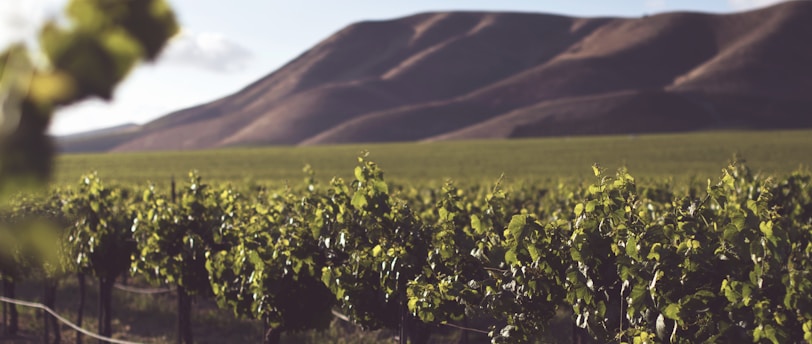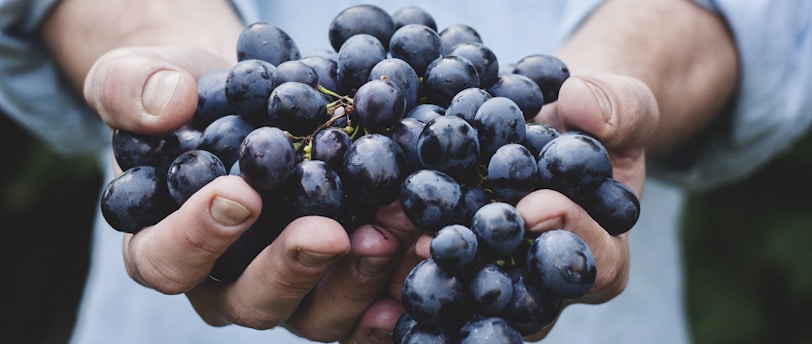Sun, Sand, and Sauvignon: Exploring New Zealand's Coastal Vineyards

Welcome to the stunning coastal vineyards of New Zealand, where the sun, sand, and sauvignon combine to create a truly unique wine experience. In this article, we will take you on a journey through the diverse wine regions of this beautiful country, explore the art of winemaking, introduce you to some notable vineyards, and offer tips for planning your own wine tour. So sit back, relax, and let us transport you to the captivating world of New Zealand's coastal vineyards.
Understanding New Zealand's Unique Wine Regions
Before diving into the world of New Zealand's coastal vineyards, it's important to grasp the distinctiveness of its wine regions. Thanks to its varied geography and maritime climate, New Zealand offers a wine-growing environment like no other. With both North and South Islands boasting their own unique terroirs, wine enthusiasts are treated to an exceptional range of flavors and styles.
The Influence of Coastal Climate on Wine
One of the defining features of New Zealand's coastal vineyards is their close proximity to the ocean. This coastal influence plays a crucial role in shaping the character of the wines produced here. The moderated temperatures, cooling sea breezes, and extended growing seasons result in vibrant and aromatic wines with a refreshing acidity. It's no wonder that New Zealand is renowned for its crisp sauvignon blanc and elegant chardonnay.
Let's take a closer look at how the coastal climate impacts wine production in New Zealand. The proximity to the ocean brings a unique set of advantages to the vineyards. The maritime climate helps to regulate temperature, preventing extreme heat or cold, which can be detrimental to grape development. The cooling sea breezes that sweep through the vineyards provide relief from the summer heat, allowing the grapes to ripen slowly and evenly. This slow ripening process contributes to the development of complex flavors and aromas in the wines.
Furthermore, the extended growing seasons in New Zealand's coastal regions allow the grapes to fully mature before harvest. This extra time on the vine allows the flavors to intensify and the acidity to reach optimal levels. As a result, the wines produced in these regions showcase a vibrant acidity that adds a refreshing and lively character to the overall taste profile.
The Diversity of Grape Varieties in New Zealand
While sauvignon blanc may steal the spotlight, New Zealand's coastal vineyards are home to a myriad of grape varieties. From the robust pinot noir of Central Otago to the aromatic riesling of Marlborough, there is something for every wine lover's palate. The coastal regions especially excel in producing white wines, offering sublime expressions of chardonnay, pinot gris, and gewürztraminer.
Let's explore the diverse range of grape varieties that thrive in New Zealand's coastal vineyards. In Marlborough, the region famous for its sauvignon blanc, you'll also find exceptional examples of chardonnay. The cool climate and mineral-rich soils contribute to the production of elegant and vibrant chardonnays with notes of citrus, stone fruits, and a subtle oak influence.
Central Otago, on the other hand, is renowned for its world-class pinot noir. The region's unique terroir, with its schist-based soils and extreme diurnal temperature variations, creates the perfect conditions for growing this delicate and temperamental grape. The resulting pinot noirs are characterized by their rich flavors of red berries, earthy undertones, and silky tannins.
Heading further north to Hawke's Bay, you'll discover a region that excels in producing a wide range of grape varieties. From full-bodied chardonnays to Bordeaux-style red blends, Hawke's Bay showcases the diversity and versatility of New Zealand's coastal vineyards. The warm climate and diverse soils allow for the successful cultivation of grapes such as syrah, merlot, cabernet sauvignon, and viognier.
Lastly, in the picturesque region of Nelson, you'll find delightful expressions of aromatic white wines. The cool maritime climate and well-drained soils create the perfect environment for grapes like riesling, pinot gris, and gewürztraminer to thrive. These wines exhibit intense aromatics, vibrant acidity, and a beautiful balance between sweetness and acidity.
With such a wide array of grape varieties to choose from, New Zealand's coastal vineyards offer an exciting and diverse wine landscape. Whether you prefer crisp and zesty sauvignon blanc, elegant and complex chardonnay, or velvety and nuanced pinot noir, there is a wine waiting to be discovered in every corner of New Zealand's unique wine regions.

The Art of Wine Making in Coastal New Zealand
Winemaking in coastal New Zealand is a captivating blend of tradition and innovation. Many vineyards embrace traditional methods, hand-picking grapes and employing gentle winemaking techniques to preserve the purity of flavors. However, modern techniques also play a crucial role, enabling vintners to achieve consistent quality and express the unique characteristics of their coastal terroir.
Coastal New Zealand is known for its diverse microclimates, which provide ideal conditions for growing a wide variety of grape varietals. From the cool climate regions of Marlborough and Canterbury to the warmer Hawke's Bay and Gisborne, each area offers its own distinct flavor profiles. This diversity allows winemakers to experiment and create wines that showcase the best of what the coastal terroir has to offer.
Traditional Methods vs Modern Techniques
Some wineries choose to ferment and age their wines in large oak barrels to impart subtle nuances, while others opt for stainless steel tanks to preserve the fresh fruity aromas. There is no one-size-fits-all approach in coastal New Zealand, as winemakers experiment with different techniques to craft exceptional wines that reflect their vision and passion.
Hand-picking grapes is a labor-intensive process that requires skilled workers to carefully select only the ripest and healthiest bunches. This meticulous attention to detail ensures that only the highest quality grapes are used in the winemaking process. Gentle winemaking techniques, such as whole cluster pressing and minimal intervention, are employed to preserve the delicate flavors and aromas of the grapes.
On the other hand, modern techniques such as temperature-controlled fermentation and the use of cultured yeasts allow winemakers to have more control over the winemaking process. This precision ensures consistency in quality and flavor, regardless of the vintage conditions. It also allows winemakers to experiment with different fermentation temperatures and yeast strains to bring out the best characteristics of the grapes.
Sustainability Practices in Vineyards
Embracing sustainable practices is a key focus for many vineyards in coastal New Zealand. From organic and biodynamic farming methods to energy-efficient winery designs, sustainability is at the forefront of the winemaking process. By working in harmony with nature, these vineyards not only produce exceptional wines but also preserve the breathtaking coastal landscapes for generations to come.
Organic and biodynamic farming practices eliminate the use of synthetic pesticides and fertilizers, promoting the health of the soil and the overall ecosystem. Cover crops are planted between the vine rows to prevent erosion and provide natural nutrients to the soil. Some vineyards even employ sheep or chickens to help control weeds and pests, reducing the need for chemical interventions.
Energy-efficient winery designs incorporate features such as solar panels, rainwater harvesting systems, and natural ventilation to minimize the environmental impact. Some wineries have even adopted sustainable packaging practices, using lightweight glass bottles and recyclable materials to reduce their carbon footprint.
Coastal New Zealand's commitment to sustainability extends beyond the vineyards. Many wineries actively participate in conservation efforts, protecting native flora and fauna, and restoring wetlands and waterways. By preserving the natural beauty of the coastal regions, these wineries contribute to the overall well-being of the ecosystem and create a harmonious balance between nature and winemaking.
Notable Coastal Vineyards to Visit
Embarking on a wine tour of coastal New Zealand is a truly unforgettable experience. Before you set off on your exploration, make sure to familiarize yourself with some of the most noteworthy vineyards across both the North and South Islands.
Vineyards in the North Island
The North Island is home to renowned wine regions such as Hawke's Bay, Gisborne, and Wairarapa. In Hawke's Bay, you can discover classic red varieties like cabernet sauvignon and merlot, while Gisborne boasts an excellent reputation for chardonnay. Wairarapa, with its subregions like Martinborough, produces outstanding pinot noir that rivals some of the best in the world.
Vineyards in the South Island
On the South Island, Marlborough stands out as the uncontested king of sauvignon blanc. This region's vibrant and zesty wines have garnered international acclaim, making it a must-visit destination for wine enthusiasts. However, don't overlook other remarkable regions like Central Otago, known for its exceptional pinot noir, and Nelson, which showcases an eclectic mix of grape varieties.

Pairing New Zealand Wines with Local Cuisine
No wine journey is complete without exploring the delectable culinary offerings that accompany it. In New Zealand, the local cuisine beautifully complements the coastal wines, creating harmonious and memorable food and wine pairings.
Seafood and Sauvignon: A Perfect Match
With its extensive coastline, it's no surprise that New Zealand boasts an array of delectable seafood dishes. The crisp acidity and vibrant fruit flavors of sauvignon blanc make it the perfect partner for fresh oysters, succulent mussels, and delicate white fish. Indulge in this unforgettable pairing while soaking in the breathtaking views of the ocean.
Traditional Maori Dishes and Wine
Immerse yourself in the rich cultural heritage of New Zealand by sampling traditional Maori dishes paired with local wines. From hāngī (a traditional slow-cooked feast) to kina (sea urchin), these authentic flavors beautifully marry with the bold and expressive wines of New Zealand. Let your taste buds be taken on a journey through Maori traditions and the coastal terroir.
Planning Your New Zealand Wine Tour
Navigating the world of New Zealand's coastal vineyards can seem overwhelming, but with a little planning, you can create a truly unforgettable wine tour.
Best Time to Visit New Zealand Vineyards
The time to visit depends on your preferences. If you're looking to witness the hustle and bustle of harvest season, plan your visit between February and April. For a more laid-back experience, opt for the warmer months between November and January. Regardless of when you go, each season offers its unique charm and beauty.
Tips for a Successful Wine Tour
When embarking on your wine tour, it's essential to pace yourself and hydrate between tastings. Take advantage of organized tours or hire a knowledgeable guide who can help you navigate the multitude of vineyards and provide insights into the winemaking process. Don't be afraid to ask questions and indulge in the experience.
In conclusion, New Zealand's coastal vineyards offer a picturesque blend of sun, sand, and sauvignon. From understanding the unique wine regions to exploring notable vineyards and indulging in unforgettable food pairings, there is so much to discover. So why not plan your own wine tour and experience the magic of New Zealand's coastal vineyards for yourself? Cheers to a journey filled with sublime wines and awe-inspiring beauty!